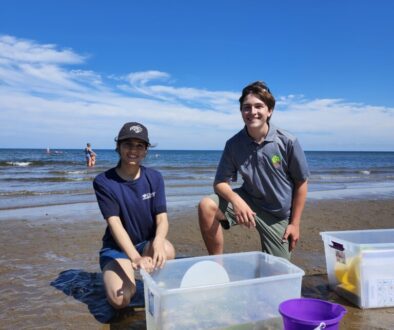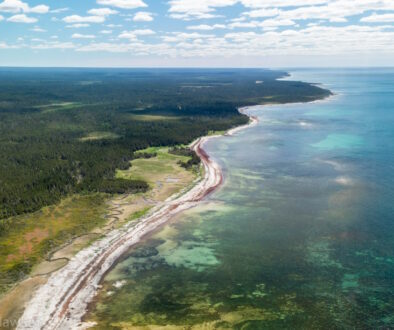Nature COP: What Is It and Why Does It Matter?
By: Anika Smithson
The hustle and bustle of the holiday season is approaching, and people are getting ready to spend time with family and friends. However, many governments and environmental groups are preparing for a different type of gathering – one with nature as the main focus.
This December, governments, Indigenous Nations, and organizations from all over the world will be attending the UN Conference on Biological Diversity, in Montreal, to discuss the importance of protecting nature for the future of the planet. This is more commonly known as COP-15 or Nature COP.
What is COP-15 or Nature COP?
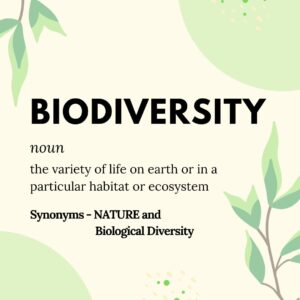 COP means Conference of the Parties, and it’s a conference that brings together signatory countries (parties) of a convention. In this case it is the Convention on Biological Diversity (CBD). The CBD was adopted in 1992 at the United Nations Earth Summit in Rio de Janeiro, Brazil. Main goals of the CBD include:
COP means Conference of the Parties, and it’s a conference that brings together signatory countries (parties) of a convention. In this case it is the Convention on Biological Diversity (CBD). The CBD was adopted in 1992 at the United Nations Earth Summit in Rio de Janeiro, Brazil. Main goals of the CBD include:
- The conservation of biodiversity
- Sustainable use of the components of biodiversity
- Equitable sharing of information related to biodiversity
This is the 15th meeting that will discuss all things related to the CBD, hence the name Nature COP or COP-15.
To advance the goals of the CBD, biodiversity targets were created to guide the world’s actions from 2011-2020. Now, two years into a new decade, a Global Biodiversity Framework will be created to serve as a guide until 2030. This framework will outline new targets for nature protection, pollution reduction and sustainable management of natural resources, as well as recognize nature as a key player in solutions to climate change. It will also contain actions that will help achieve the new targets, such as suggestions on policies for industry and financial commitments required to achieve the targets.
Nature COP will be a place for Canada to announce its targets in relation to fulfilling its promise to halt and reverse biodiversity loss by 2030.
Why is it important?
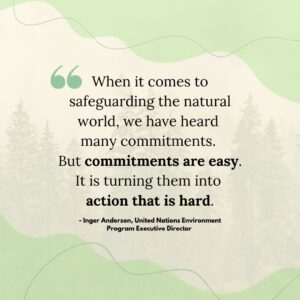 Nature is the planet’s life support system – it produces the air we breathe, the food we eat and the water we drink. We are a part of nature and can influence it in both positive and negative ways. We are currently in a dual crisis of climate change and biodiversity loss and protecting nature is one of the best solutions to help both. By committing to a global biodiversity framework, we can step up efforts to ensure nature is protected. This can only happen if the commitments agreed upon are turned into meaningful and effective action.
Nature is the planet’s life support system – it produces the air we breathe, the food we eat and the water we drink. We are a part of nature and can influence it in both positive and negative ways. We are currently in a dual crisis of climate change and biodiversity loss and protecting nature is one of the best solutions to help both. By committing to a global biodiversity framework, we can step up efforts to ensure nature is protected. This can only happen if the commitments agreed upon are turned into meaningful and effective action.
Canada must do its part to help protect the earth, our home. However, the targets Canada sets can only be achieved with the help of the provinces and territories, as they have the primary responsibility for public land and water protection.
What does this mean for New Brunswick?
New Brunswick will have a significant role to play, as what happens here affects the world and what happens to the world affects New Brunswick. The province is home to stunning forests, rivers, lakes, coastline and ocean. This abundance of nature is worth protecting. Not only does it provide food and habitat for wildlife, it has cultural and spiritual significance, helps to keep us healthy physically and mentally, provides us with recreation opportunities, allows us to connect to the land, each other and ourselves and provides a livelihood to communities. We must ensure we are taking care of nature, just as nature takes care of us.
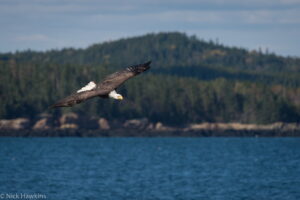
Some of the best ways we can work towards safeguarding nature include:
- recognizing Indigenous Leadership in conservation
- creating protected areas on land and in the ocean
- stewarding lands and waters in an ecologically responsible manner
CPAWS NB is looking to the province of New Brunswick to set a positive example when it comes to nature conservation by fulfilling their promise of 10% protection of public lands and waters, building relationships with Indigenous Nations, and setting ambitious targets for future land/water protection and ecologically responsible management of forests and other natural resources.
The hard work never stops. It will take collective action from individuals, organizations and governments doing the work on the ground to achieve a place where we live in harmony with nature.
What can You do?
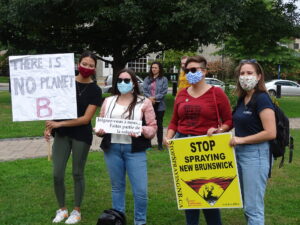
SEND A LETTER telling the New Brunswick Government you support fulfilling their promise of 10% public land protection in the province and relationship building with Indigenous Nations.
Review our ACTION TOOLKIT to learn about actions you can take to #SpeakUpForNature and ensure New Brunswick plays its part in nature conservation.
Follow CPAWS NB on Facebook, Instagram and Twitter to stay up to date on what’s happening with Nature COP and New Brunswick.
Follow the hashtag #COP15 to stay updated on what’s happening in relation to the conference.
Banner photo by Emily Ruttan

